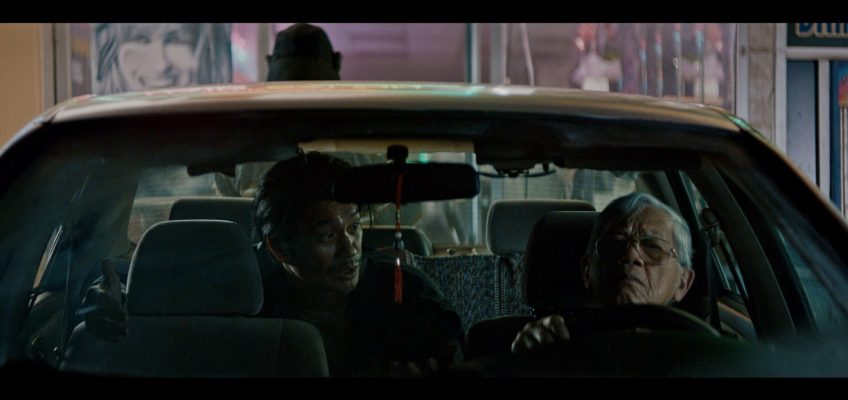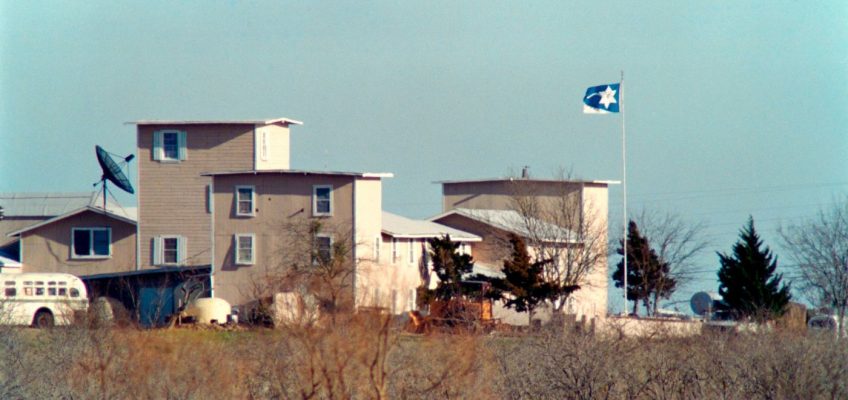In 2016, three men escaped from an Orange County jail, and then, out of options, called a cab. The driver who showed up was an elderly Vietnamese man, Long Mã, a divorced war veteran, whom they kidnapped and held hostage during a weeklong ordeal, the trio and their captive evading capture by hiding out in Southern California motel rooms.
Mã’s experience was elaborated in a 2017 GQ article by Paul Kix, “The Accidental Get Away Driver,” which described the unique bond he formed with Bac Duong, one of his kidnappers, a Vietnamese national, and the terror he experienced at the hands of Hossein Nayeri, the ringleader. This wild story has now been brought to the screen by co-writer/director Sing J. Lee, in a lyrical and meditative adaptation that focuses on mood and feeling, rather than action-oriented suspense.
There’s an excellent unknowingness to the first moments of “The Accidental Getaway Driver.” The concrete sprawl and traffic lights indicate we’re in Orange County, and the Vietnamese spoken everywhere lets us know we’re in the OC enclave known as Little Saigon. Long Mã, played with a heart-piercing soulfulness by Hiep Tran Nghia, answers the call for a ride, but the elderly man doesn’t feel like working so late and tries to decline. Tây (Dustin Nguyen) convinces him it’s a short trip and they’ll pay double, so he picks up the three men, who then request more and more stops. When he protests, Tây pulls a gun on him. The journey is only just beginning.
Lee’s approach to the material is to focus on performance and tone, and specifically the relationship between Tây (the character based on Bac Duong) and Long, which emerges as the two Vietnamese men start to share their life stories with each other during the long stretches of downtime while they’re hiding out and trying to figure out the next move. Tây protects his elder from the skittish, young Eddie (Phi Vu) and the psychopathic Aden (Dali Benssalah), who brags to the older man about his crimes, which includes torturing and mutilating a man in the desert.
Cinematographer Michael Fernandez brings a texture and tactility to this crime story, capturing the inadvertent beauty of this gritty, unremarkable setting: faces bathed in the glow of crimson brake lights and neon convenience store signs; realistically rumpled motel rooms and cigarette smoke swirling in the backseat of an old Corolla.
Rather than hone in on the details of these three escaped prisoners’ crimes, Lee and co-writer Christopher Chen focus on Long’s subjective experience in his time with them. All we know about them is what he does: we glean information about their pasts in warm conversations with Tây, or via a threatening monologue from Aden. Eddie remains a bit of a cipher until the group sees his mother and sister on the news and he breaks down.
Often, we’re taken into dreamlike memories of Long’s: snippets of his childhood in Vietnam, watery, muddled remembrances of his lost marriage and family, a few abstract, surreal images that gesture to his past but don’t reveal much. The intent is to remain in his inner world as he goes through this extreme event, but while it is beautiful and poetic, it is also somewhat abstruse and feels in conflict with the momentum of the larger story.
“The Accidental Getaway Driver” seeks not to elucidate the facts of this true crime tale, but rather to imagine Long’s state of mind during it, which is emotionally evocative but hinders the viewing experience as the film grinds to a halt for meandering asides. The performances, especially from Nguyen, Benssalah and Nghia, are moving, but it does feel like the film loses steam under its own conceit, despite the wealth and narrative richness of the material at hand.
‘The Accidental Getaway Driver’
2.5 stars (out of 4)
MPA rating: R (for language)
Running time: 1:42
How to watch: In select theaters on Friday, Feb. 28 and nationwide on March 7
Related Articles
Eagan native Eva Erickson makes strong showing on ‘Survivor 48’ premiere
Michelle Trachtenberg found dead in NYC apartment, starred in ‘Gossip Girl,’ ‘Harriet the Spy’
Carolyn Wiger on her time on ‘The Traitors’: ‘It was like a dream’
Lester Holt to step down as the anchor of NBC’s flagship ‘Nightly News’ program
‘Conclave’ cast celebrates with Timothée Chalamet and Ariana Grande after big SAG Awards win




